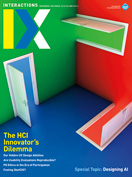Authors:
Vygandas Šimbelis
Describe what you made. As an artist who uses video and other visual media in performance, I've sometimes found it difficult to physically connect to my interface (often contained in a digital technology such as a laptop) while also engaging with my collaborators in a shared space during a performance. To address this challenge, I designed a custom instrument, the Distaff, to explore ideas of physicality and collaboration in digital performance. I collaborated with musician and composer Anna Xambó to write an audiovisual piece, Beacon, which features the instrument. The Distaff itself is a physical object designed to explore how we might be able to take a very simple stimulus—light moving through space—and probe the boundaries of what is possible through engagements with physical materials in an improvised performance.
 |
Turntable electronics (strobe, pitch control) mounted inside custom housing. |
Briefly describe the process of how this was made. Hardware. The Distaff is primarily a repurposed turntable in a custom housing. A performer can insert different lights into the spinning platter and control the rotational speed with their hands and other objects. The enclosure also houses a microphone so that the sounds of fingers, nails, and objects on the spinning platter can be amplified and used by a collaborating musician. Pressure, friction, and manual manipulation of the instrument emerge, then, not only as actuating forces but also as stylistic elements of the piece.
Software. A small camera mounted above the Distaff sends a live video feed into a Max (Cycling '74) software program. Because this project is focused on physicality, no additional visual elements are generated by the software. Instead, the performer uses a simple MIDI controller to manipulate basic parameters in the domains of time and space. Whereas traditionally we might see controls mapped to graphic effects, here the image itself is captured and drawn at varying speeds and scales to maintain a direct connection to the Distaff, rather than leveraging computational capabilities to augment the imagery. Together, the physical interface and software produce a unified visual output that is dependent on the knowledge and skill of the performers and their exploitation of limited resources.
 |
Build version 1 of Distaff platter underside (batteries for LEDs, Velcro attachments, magnets). |
What for you is the most important/interesting thing about what you made? While I've performed successfully with a laptop-only system for many years, having a physical instrument has enabled me to feel more expressive and collaborative on the stage. Hyper-constrained objects for performance present unique challenges, but also force the performer to dig deeper and form a more intimate relationship with their instrument. Knowing (and sometimes being surprised by!) the affordances of physical materials and the effects of pushing computational controls to their limits creates a unique space for exploration and expression.
 |
Base of Distaff housing, with mount for motor. |
 |
Final build of Distaff platter underside. |
 |
Final build of Distaff hardware, including platter, speed controls, MIDI controller, and toolbox for LEDs and other objects. |
What was the biggest surprise in making this? Certain compelling phenomena emerged unpredictably through exploration: By spinning the platter faster than the camera's and software's frame rates, the lights will appear to move slower, reverse direction, or even stand still. Exploiting how quickly the video feed can be sent from the computer to the projector also produces interesting output. If the computer cannot run quickly enough, instead of smooth scrolling motions a very aggressive strobing effect is produced.
 |
Performing with the Distaff at Spillestedet Stengade, Copenhagen, Denmark. |
Did anything go wrong? There is a ceiling to how quickly video can be captured, processed, and rendered by hardware and software, but in this case pushing those limits became surprisingly compelling. It can be tempting to design things that are safe and stable, but pushing systems and materials beyond their limits can produce worthwhile experiences; the "bugs" became rich spaces for expression.
 |
Visual output of the Distaff instrument. |
Anna Weisling, Georgia Institute of Technoloigy, [email protected]
Copyright held by author
The Digital Library is published by the Association for Computing Machinery. Copyright © 2018 ACM, Inc.







Post Comment
No Comments Found